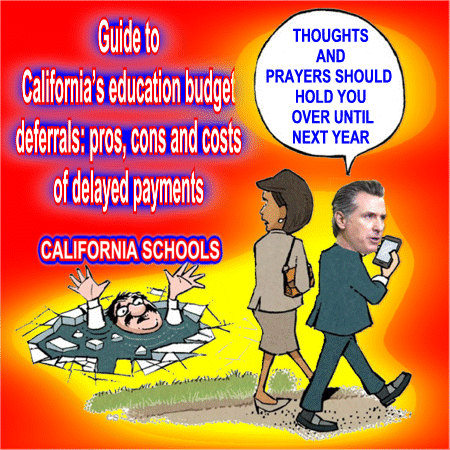Guide to California’s education budget deferrals: pros, cons and costs of delayed payments
Districts won't be reimbursed for $11 billion in spending until 2021-22
Prevailing in negotiations with Gov. Gavin Newsom, the Legislature passed a state budget that will let K-12 schools spend at the same level in 2020-21 as this year — avoiding the billions in cuts that Newsom had proposed.
But there’s a catch. Spending won’t equate to funding. School and community college districts will have to front $11 billion they would normally get from the state in exchange for IOUs. Districts won’t be paid back until 2021-22.
Deferrals, as the late payments are called, may sound familiar. They also were the Legislature’s go-to strategy during the Great Recession.
The Legislature and Newsom still hope they won’t be needed. Both built budgets assuming Congress would provide enough stimulus aid to fill in for declining state revenues. Newsom proposed a combination of cuts and deferrals if that didn’t happen. The Legislature countered with all deferrals. School districts, looking to an uncertain reopening of school with unpredictable expenses, preferred that option.
But with the proposed $3 trillion HEROES Act now stalled in the Senate, Congress may not come to the rescue in time. And deferrals have their own set of costs and liabilities. They’re not spread equally among school districts and in a prolonged CONTINUE READING: Guide to California’s education budget deferrals: pros, cons and costs of delayed payments | EdSource


